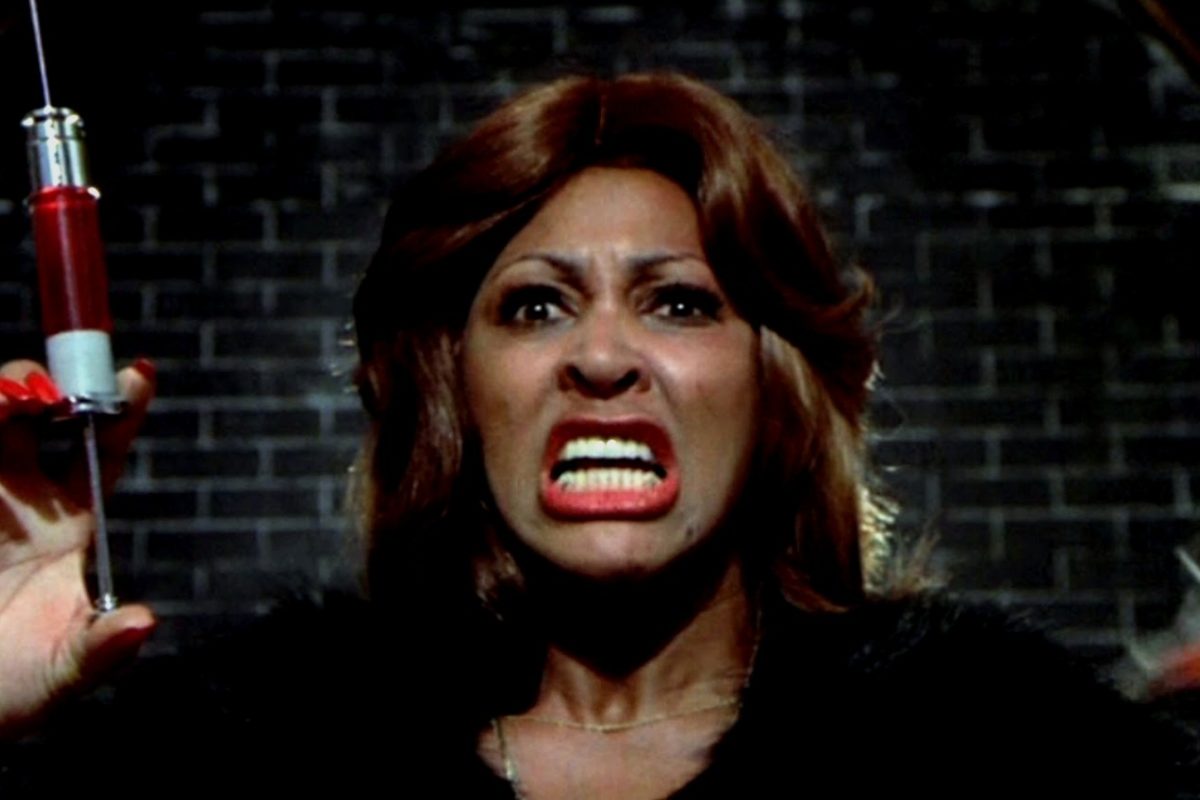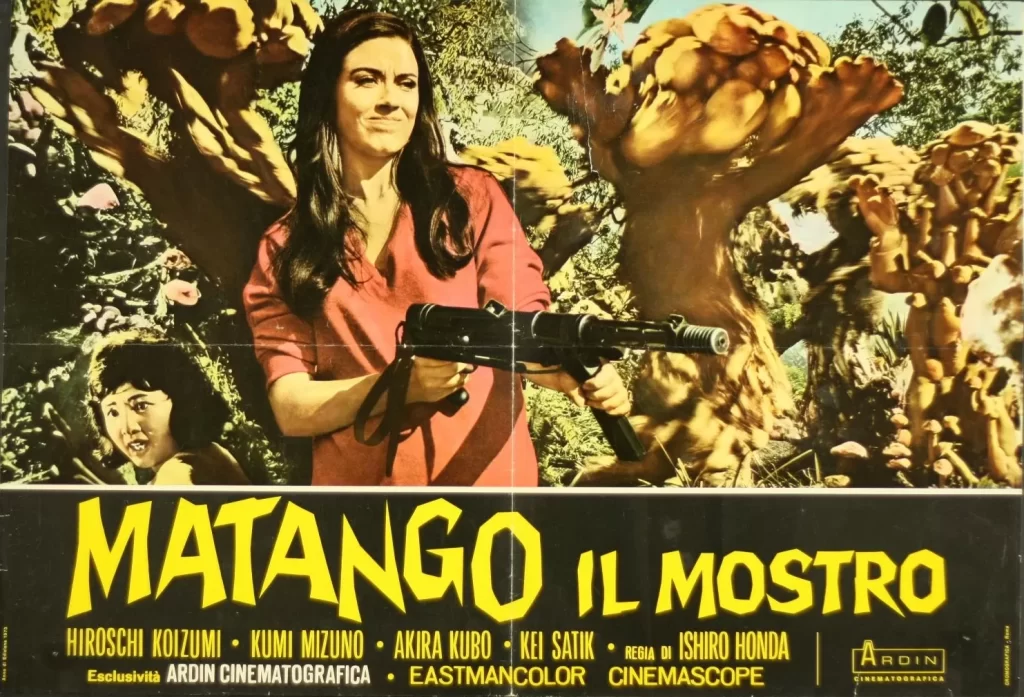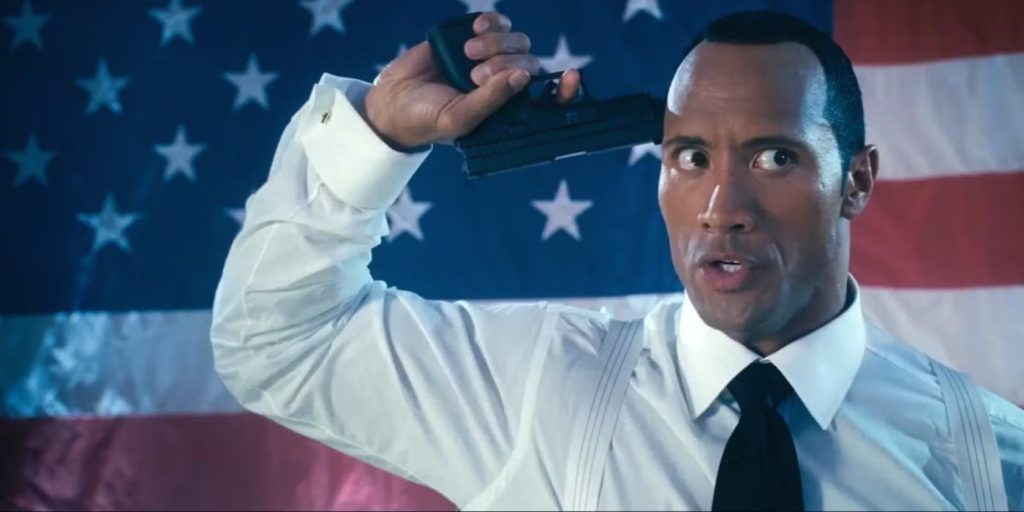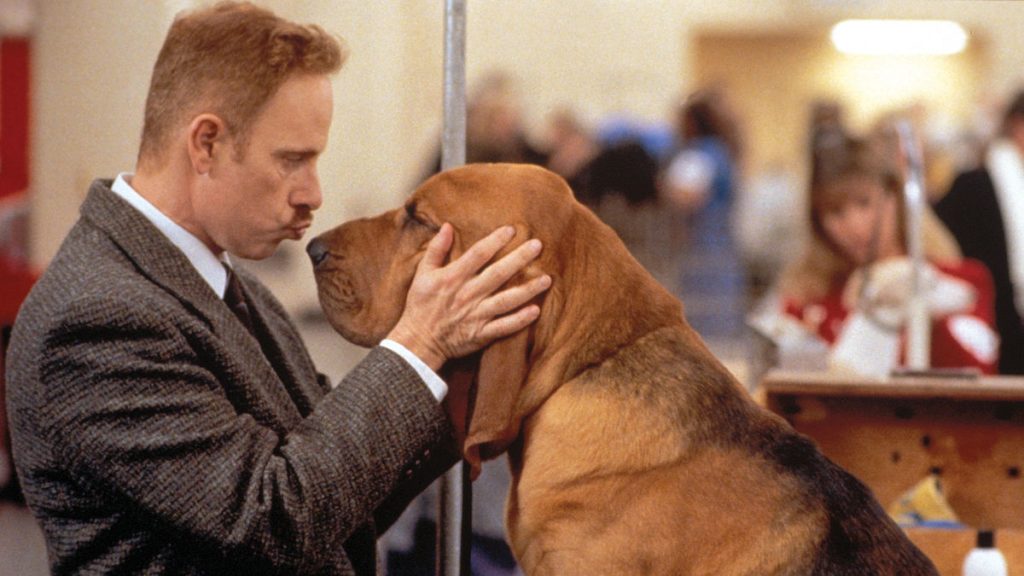Once-in-a-generation talent. Queen of Rock. Instantly recognizable vocalist with pipes for days. Peerless interpreter of popular music. Inspiration to so many singers who came after her. Survivor. The world lost a legend when Tina Turner died in June of 2023.
In the flurry of appreciations and retrospectives that followed Turner’s passing, one facet of her career seemed to get lost in the shuffle. While she wasn’t a prolific film actress, the singer turned in a pair of indelible screen performances (and a few cameos in big-budget movies) that extended—and, in some cases, subverted—the qualities that made her appealing on record and in concert.
Tina Turner made her acting debut in The Who’s Tommy, a rock opera about a youth (played by Roger Daltrey) who falls catatonic after the murder of his father and eventually finds an outlet for his trauma through a gift for pinball. Before he finds his way to the arcades, however, Tommy undergoes several experimental treatments, including a visit to the Acid Queen (Turner), a sex worker with a sideline in narcotics.
Director Ken Russell and DPs Dick Bush and Ronnie Taylor shot early scenes in the film in natural light, and their use of earth tones and bone white made its domestic scenes look like a parody of kitchen-sink melodrama. After establishing this aesthetic, they flip to a more stylized look when the Acid Queen enters the story; Turner enters through the doors to a fake-looking theatre drenched in red and green lights, dressed in a red cloak and smiling broadly as Uncle Frank addresses her. Before she starts singing, we’re primed for a lurid spectacle.
The Acid Queen sequence is over the top, but Turner anchors the scene with an assured screen presence. After the musical numbers performed by Eric Clapton and The Who—all of whom mumble through their roles and try not to look at the camera—Turner stares down the lens as she brandishes a comically large hypodermic needle. Her fleet-footed dancing moves read as seductive, which contrasts with her exaggerated facial expressions. At the start of the sequence, Russell shoots her in medium shots that last a beat longer than seems normal, allowing viewers to take in her intoxicating blend of beauty and terror.
At this point in her career, Turner was primarily known for her work in R&B, but she had a strong interest in British rock music. “There’s a lot of good music to be covered,” she told journalist Harvey Kubernik in 1975. Her gritty interpretation of “Acid Queen” lacks the relative polish of Townshend’s version of the song on the 1969 album, and her passion added to the immediacy and terror of the scene.
The song “Acid Queen” had another layer of prescience for Turner. When the film was in production, she was a year and a half away from leaving her husband and employer Ike Turner and going public with his domestic abuse. “It is often my job to sing that song with The Who, so she always comes into my mind,” Pete Townshend recalled in his eulogy for Turner. “It isn’t easy to deal with. The song is about abuse at the hands of an evil woman. How she turned that song on its head! All the anger of her years as a victim exploded into fire and bluster and a magnificent and crazy cameo role that will always stay with me.”
Turner had become a must-see live performer in the years leading up to her film debut, but “Tommy was a whole new trip for me, getting into a room and turning into a madwoman,” she told Kubernik. “At first, I didn’t want to play the part of a prostitute. But it was a challenge and it called for drama. That’s what acting is all about.”
If the Acid Queen brought an exaggerated version of Turner’s live persona from the 1960s and ‘70s to the big screen, Aunty Entity called for a different kind of drama. The antagonist in Mad Max: Beyond Thunderdome took the strengths Turner developed onstage and honed them to a more nefarious end.
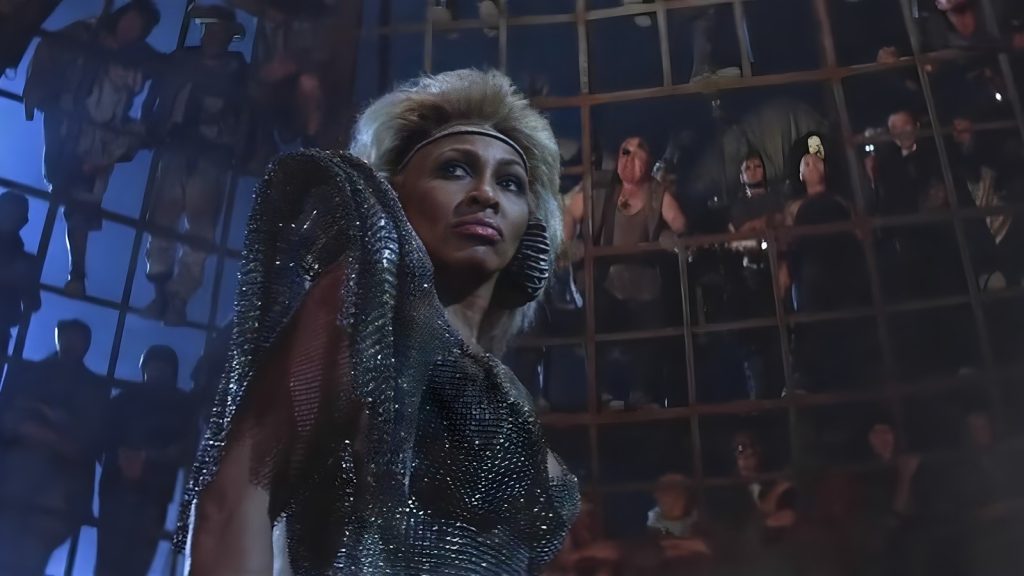
Exiled to a post-apocalyptic desert, Mad Max Rockatansky (Mel Gibson) follows a pair of thieves to Bartertown, a trading post that runs on methane. When Max has nothing to barter, town founder Aunty Entity (Turner) forces him to fight—and to covertly assassinate one of ther challengers—in a no-holds-barred fighting ring called the Thunderdome.
As the old cliché goes, the villain doesn’t see herself as the villain, a truism that Turner took to heart in her portrayal of Aunty Entity. In her first scene, she speaks in a whispery, flute-like tone and smiles sincerely at Max as she listens to his plight, looking him in the eye and stepping towards him with small, deliberate strides. Aunty Entity’s polite tone contrasts with some of the more eyebrow-raising statements she makes when she explains to Max how Bartertown is run.
This contrast becomes a vast, but effective, chasm when Aunty Entity enters the Thunderdome. Directors George Miller and George Ogilve and cinematographer Dean Semler shoot the inside of the Thunderdome as a cavernous expanse with sharp, shiny objects catching the light, and frame Turner in low angles as she explains the rules of these fights. While she retains the clipped diction of her introductory scene, she speaks in a lower, more resonant voice, and she views the people of Bartertown with a harsher, almost contemptuous gaze. The way Turner keeps her graceful sense of movement consistent throughout the film, and the way she maintains her confidence and comic timing, makes the shifts between the different facets of Aunty Entity’s personality believable.
Miller had written the role of Aunty Entity with Turner in mind. “We needed someone whose vitality and energy would make her control over Bartertown credible,” he told Jet Magazine on the movie’s release. “She had to be a positive character, rather than a conventional ‘bad guy.’” With the blockbuster success of her comeback album Private Dancer, Turner was in her imperial era when Mad Max: Beyond Thunderdome went into production; the public knowledge of her abusive marriage made her a sympathetic figure, and may have given audiences a more forgiving view of Aunty Entity.
Thunderdome was a modest success on its release in the summer of 1985, and Turner’s closing-credits song “We Don’t Need Another Hero (Thunderdome)” was nominated for a Grammy and a Golden Globe. “My dream has always been to act,” she told Jet. “I intend to become a popular and professional actress during this next stage of the rest of my life.” The extensive tour to support Private Dancer, combined with the platinum sales of her follow-up Break Every Rule, curtailed her ability to accept film roles.
Tina Turner’s final film appearance as someone other than herself was a cameo in The Last Action Hero, a spoof of 1980s action movies. In the opening and closing scenes, she plays the unnamed Mayor of Los Angeles, who fails to keep LA cop Jack Slater (Arnold Schwarzenegger) from enacting his form of vigilante justice.
In Tommy and Mad Max, Turner played women with a strong, if misguided, sense of purpose, and she brought a smooth voice and graceful movements to these characters. Screenwriters Shane Black and David Arnott establish in a few quick shots that the Mayor is in over her head. Turner’s performance has a tentative edge to it, something we rarely if ever saw from her. When she spoke, her voice had an edge to it, and her movements were jerky, as though she was bracing herself from certain danger. While The Last Action Hero has been reevaluated as a sly satire of Schwarzenegger’s onscreen persona, it was a critical and commercial failure on its release, and Turner’s cameo is a sad trombone of an ending to her film career.
In her onscreen appearances, Tina Turner built upon her deep reservoir of talent and ability to connect with a wide array of audiences. As we come up on what would have been her 84th birthday, we can see some facets of what made her an era-defining performer in her film roles.
